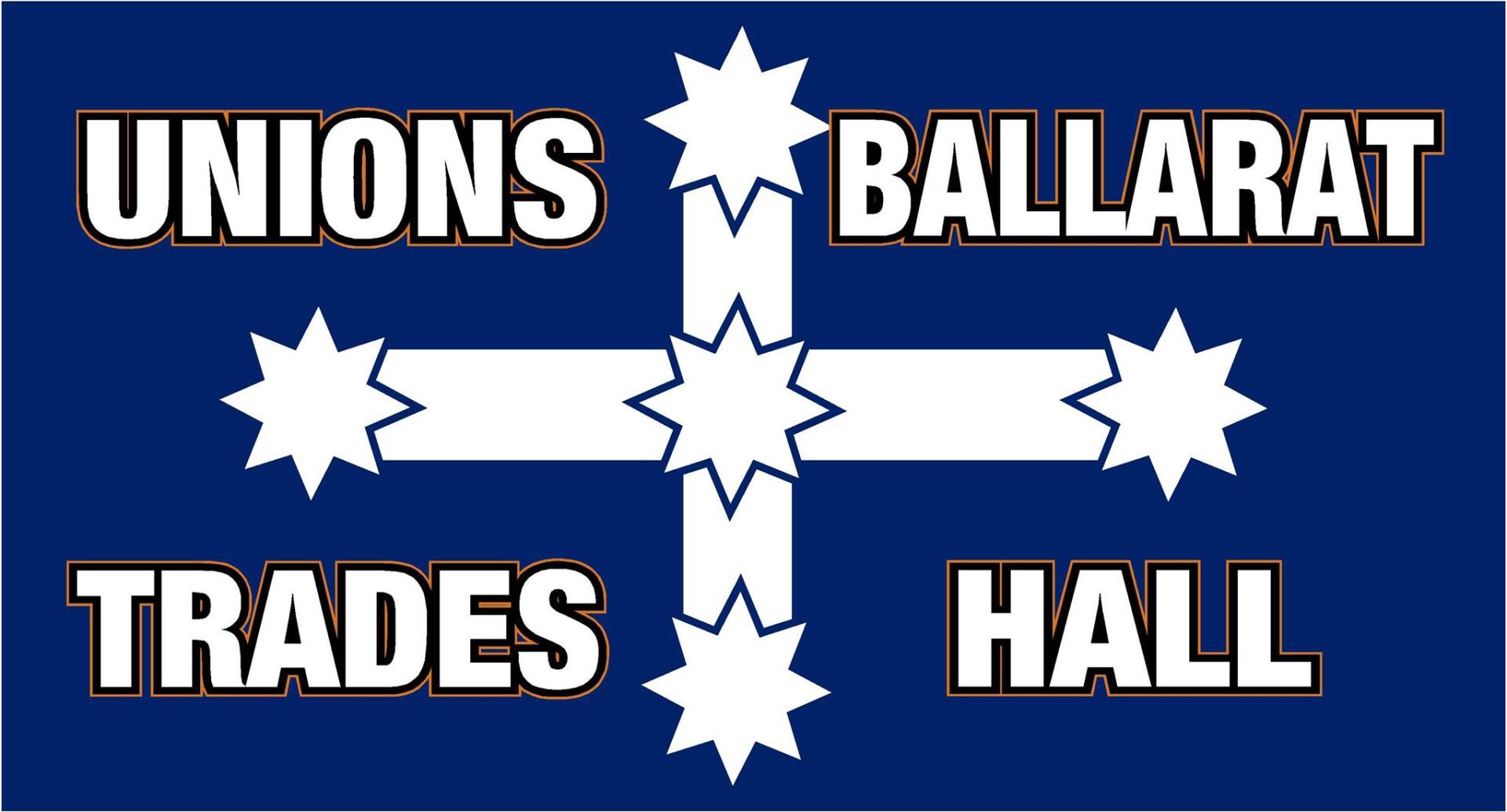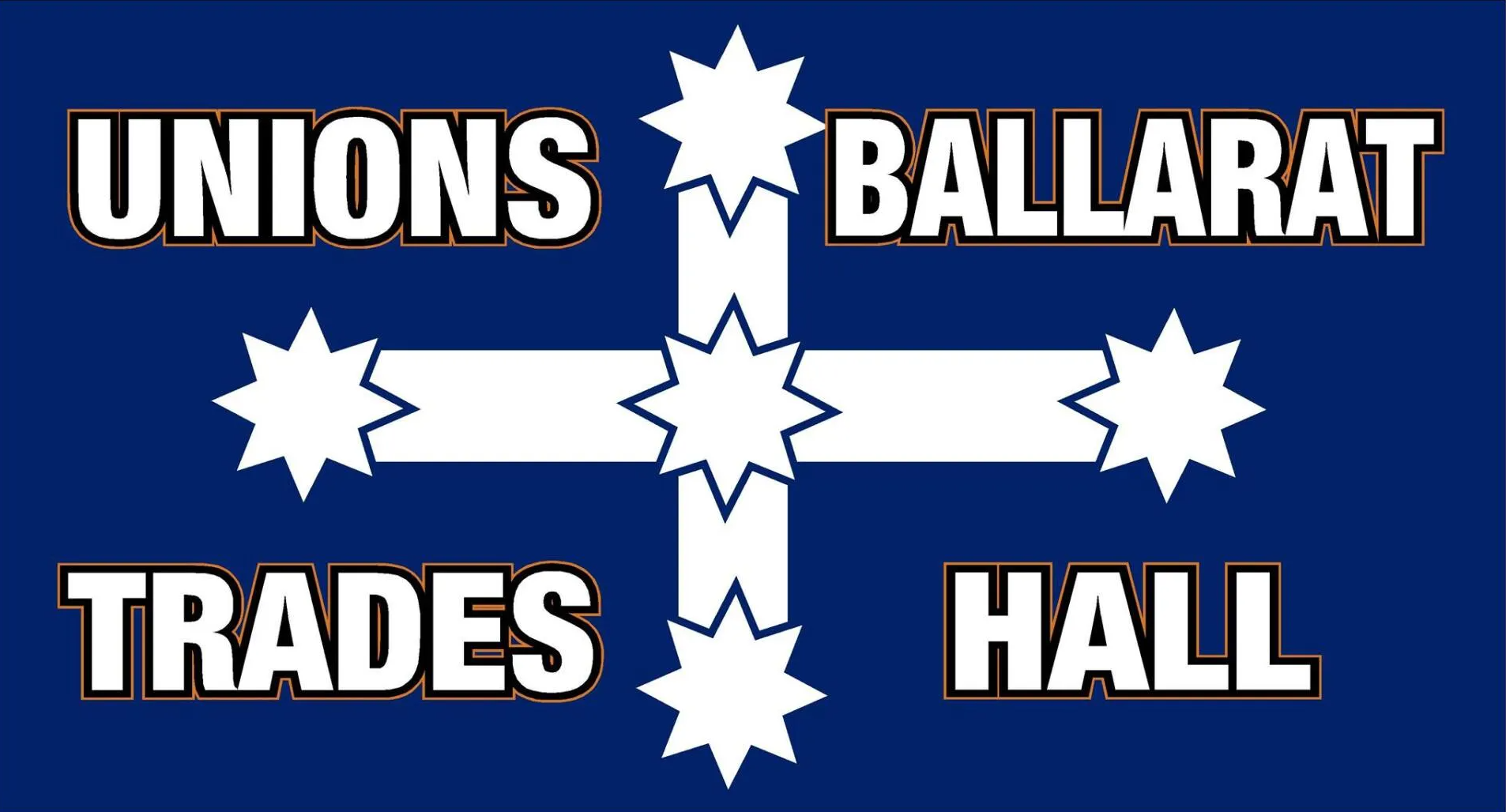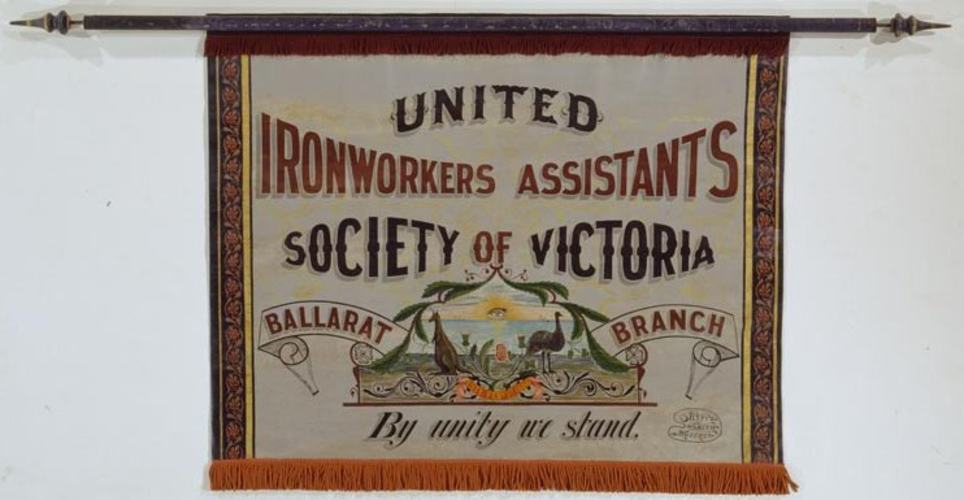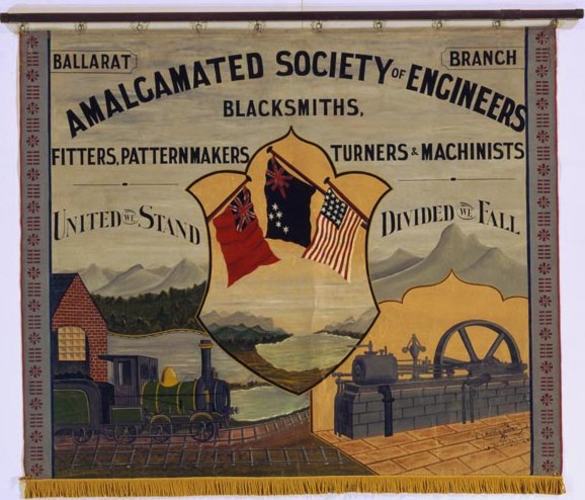A BRIEF HISTORY OF THE BALLARAT TRADES AND LABOUR COUNCIL Inc.
COVERING 1854-1902
A BRIEF HISTORY OF THE BALLARAT TRADES AND LABOUR COUNCIL Inc.
COVERING 1854-1902
The history of the Ballarat Trades Hall building is interwoven with the story of Ballarat’s industrial and political labour movement.
No organised labour movement existed at the time of the affair at Eureka in December 1854.
The rebellion itself helped to create the atmosphere from which the labour movement developed a few years later.
On 29 April 1856, a meeting on Bakery Hill, where the Eureka Monster Meetings were held over 12 months earlier, saw the formation of the Ballarat Eight Hour Committee, “That this meeting, in endeavouring to shorten the hours of labor, do not at present interfere with the wages, but allow the same to be regulated as heretofore by supply and demand.”
The last resolution was carried unanimously, “That a committee be appointed to carry out the objects of the meeting consisting of Messrs Oddie, Allison, Evans, Greville, Ware, Lyons, Cathie, and Batten.”
A few remarks were made by the chairman in favour of working men devoting their leisure hours after the introduction of the eight hours system to self-culture.
The second concerted effort in Ballarat to obtain better working conditions occurred on the 2 October 1856 when Main Road shop assistants formed an Early Closing Association.
The need for such an association was that the hours of work for the shop assistants were from 8am to 8pm and until midnight on Saturdays.
The reform movement was supported by many leading citizens including James Oddie who was known as the Father of Ballarat because of his many cultural bequests to the city.
The general public helped by boycotting shops that kept long hours and by 1863 all shops closed by 7pm weekdays and 10pm Saturdays.
The establishment of the 8 Hours Day by the Operative Stone Masons in 1856 gave an impetus to the Trade Union Movement in the colony and the slogan “8hrs Work 8hrs Rest 8hrs Recreation” was established for the first time in the world and sustained without loss of pay.
This was regarded as worthy of celebration and further 8 Hour Anniversary committees were formed throughout Victoria. Ballarat Trade Unionists, taking a prominent part in the industrial activity of the colony, held the first 8 Hour procession in Ballarat on 21 April 1858. Flags and banners were carried by the organisations that marched around the town and workplaces, completed with a dinner at Ballarat’s Clarendon Hotel.
8 Hour processions were held annually on or about 21 April and became one of the leading events of the year.
The first mention of the need for a Trades Hall as a meeting place for the various trades was made in 1862, when Mr Harrison of the Carpenters Union moved at an 8 Hour Day committee meeting, “that a committee be formed with the view of raising funds for the purpose of building a Trades Hall in Ballarat and that the Government be approached to grant land for the erection of a building”.
There was a reported lapse in interest for many years.
In 1880 the 8hr day Anniversary Committee decided to mark the establishment of the 8 Hour Day by erecting a monument to the memory of the pioneer of the 8 Hour movement in the colony, James Galloway.
The campaign for the Galloway monument was so successful that one year later on 21 April 1881, and after the longest 8hrs day procession to that date, the Mayor of the City, Councillor A T Morrison, embarred the monument at the foot of Sturt Street.
The inscription on it states, “This monument is tended in trust to the City Council for the working men of Ballarat”.
The Trades Hall Committee worked and raised a substantial sum towards the proposed Trades Hall building.
Art Unions raised money in conjunction with the annual demonstrations.
The successful tenders were Messrs Lietch and Antrim and the amount expended was £3,000 at the time the foundation stone was laid.
Officers of Trades Hall were President Mr J Miller and H Bradbury, Treasurer W Evans and Secretary Mr T S Bailey.
At this time the Ballarat Trades and Labour Council formed its first disputes committee; after long negotiations, the management of Phoenix Foundry conceded to the workers’ demands.
It was the longest dispute that had occurred in Ballarat to date.
The success of the campaign led to revisiting the idea of building a Trades Hall and the 8 hours committee with its Secretary, J W Graham, decided to raise money for this purpose.
The first site considered was in Bath Lane but this was rejected and a site in Armstrong Street near the City Baths was examined and rendered subject to survey.
For undisclosed reasons, this site was suddenly rejected and in 1886 the present site in Camp Street was agreed on and land was granted to the committee in the name of the Ballarat Trades Hall and Literary Institute.
The successful tender for the erection of the building was £2,128 - 15 shillings, submitted by Messrs Lietch and Outtrim. The work of construction took a little over 12 months and the foundation stone of the building was laid on 15 October 1887 by the President of the Trades and Labour Council, George Williams, the son of an early Mayor of Ballarat.
Also present at the ceremony were the Mayor of Ballarat, MLAs Mr Vale and Colonel Smith, Mr Smith (President of the Melbourne Trades Hall Council) and a large gathering representing the organised trades of the city.
A comment from The Ballarat Courier on Monday 17 October 1887 from the leading article read as follows: “The laying of the foundation stone at the Trades Hall in Camp Street marks the advance of trade unionism in this city.”










